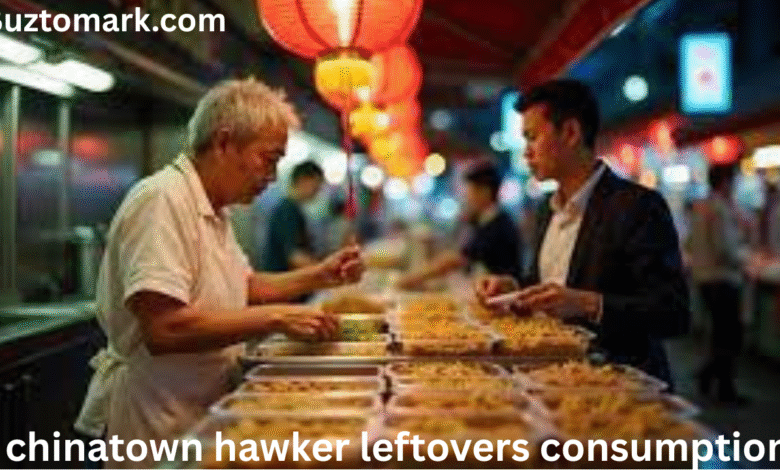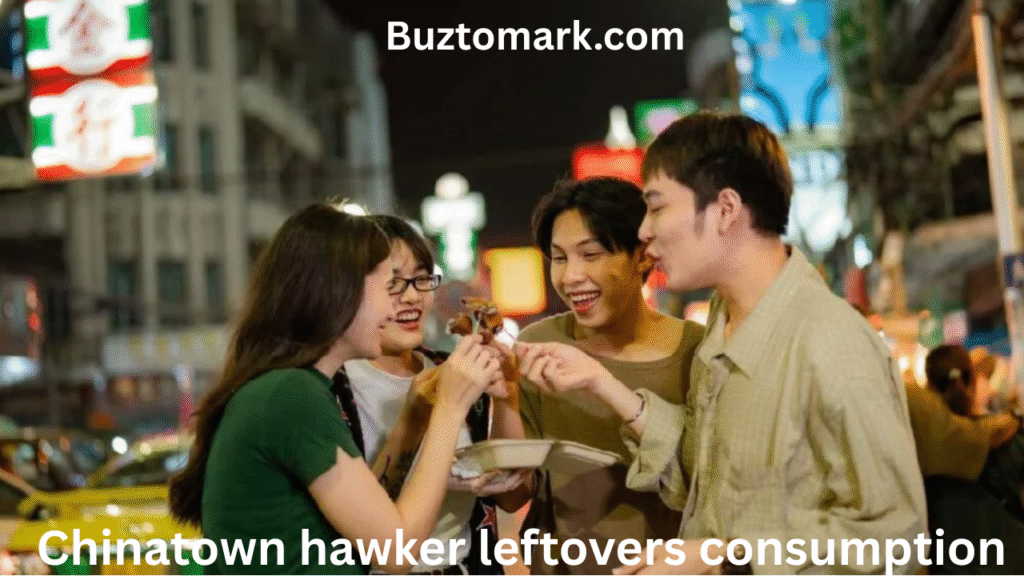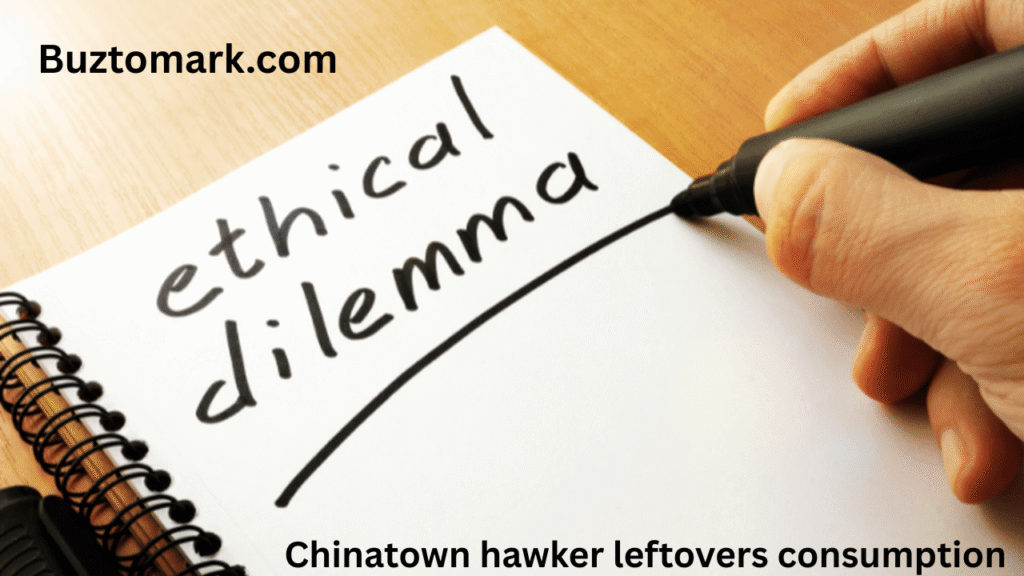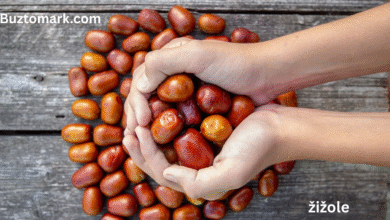Exploring the Reality of Chinatown Hawker Leftovers Consumption: Cultural Norms, Sustainability, and Public Health

The bustling hawker centers of Chinatown are iconic representations of culinary diversity and street food excellence. Tourists and locals alike flock to these vibrant food hubs to enjoy affordable, flavorful dishes served fresh from stalls that have been operating for generations. However, beneath the clamor of ladles clanging on woks and the savory aroma of stir-fried noodles, lies a lesser-discussed reality—“Chinatown hawker leftovers consumption“. This phenomenon, though rarely spotlighted, encompasses several complex issues ranging from sustainability and poverty to public health concerns and cultural practices.
Chinatown hawker leftovers consumption is not a one-dimensional issue. It covers a broad range of human behaviors, socio-economic pressures, and logistical food waste challenges. From the unspoken acts of retrieving unfinished meals to deliberate reuse of unsold food, the subject carries ethical, environmental, and practical implications that warrant deeper analysis.
Historical Background and Cultural Context

To understand Chinatown hawker leftovers consumption, one must explore its roots in the broader Asian cultural context. In many Asian societies, particularly within Chinese communities, food waste is considered disrespectful. The saying “every grain of rice has the sweat of a farmer” embodies a deep cultural reverence for food. This mindset, rooted in traditional agrarian hardships, may have helped normalize the reuse or redistribution of leftover food.
Historically, hawkers were not always business owners—they were survivors of poverty or war, scraping together enough to sell home-cooked meals from pushcarts. In the early days, many of these sellers and even their patrons lived hand-to-mouth, and Chinatown hawker leftovers consumption wasn’t merely an economic decision; it was a way of life. The reuse of surplus or leftover food was not perceived as unhygienic but rather as practical and resourceful.
Today, though food security has improved and regulations have tightened, some of these behaviors persist—sometimes hidden, sometimes openly practiced in less conspicuous forms.
The Modern-Day Practice of Chinatown Hawker Leftovers Consumption

In modern hawker centers, particularly in bustling Chinatowns across Singapore, Malaysia, and even parts of North America, Chinatown hawker leftovers consumption still surfaces in various ways. These practices may not always be visible to the average customer but are reported in certain areas and settings.
Some examples include:
- Scavenging patrons who quietly inspect vacated tables for leftover food to consume.
- Hawker stall owners repurposing unsold but unspoiled food the next day to minimize waste.
- Elderly or homeless individuals who depend on food that others have left behind.
- Low-income workers in the hawker ecosystem who consume leftover food from stalls as a perk or necessity.
The motivations behind such practices vary. For some, it’s an act of survival. For others, it’s rooted in moral resistance to food waste. For a few, it may even be habitual, a continuation of behaviors learned during times of scarcity.
However, as Chinatown becomes more gentrified and modernized, these behaviors now exist in tension with modern health codes, tourism expectations, and ethical concerns about transparency in food service.
Ethical Dilemmas and Social Judgment

Chinatown hawker leftovers consumption sparks significant ethical debates. Should food that is perfectly edible go to waste while people go hungry? Or should food safety and dignity be prioritized above all?
From an ethical standpoint, the issue is deeply polarizing. On one hand, proponents of sustainability argue that discarding edible food in the face of global hunger and climate change is morally unacceptable. On the other hand, health advocates and regulators stress that consuming or reusing food that has been exposed to the public environment (or already partially consumed) poses severe health risks.
Adding another layer to the dilemma is public perception. Patrons who witness someone eating leftovers from another table may feel discomfort or disgust. Stall owners who repurpose uneaten dishes may face reputational damage if discovered—even if their intent was to reduce waste rather than deceive.
This moral gray area has made Chinatown hawker leftovers consumption a silent practice, rarely acknowledged, seldom regulated unless it reaches a visible or controversial tipping point.
Public Health and Food Safety Implications
Of all the concerns surrounding Chinatown hawker leftovers consumption, public health is the most pressing. Reusing or consuming leftover food, particularly that which has been exposed to ambient temperatures and public handling, carries serious risks:
- Bacterial contamination such as Salmonella, E. coli, and Listeria can thrive in improperly stored food.
- Cross-contamination from shared utensils, dirty trays, or uncovered food may lead to illness.
- Unknown allergens in leftovers can be dangerous when consumed without full knowledge of the ingredients.
Health authorities in regions like Singapore have strict hawker hygiene grading systems and enforcement agencies to monitor food safety. Any hint of deliberate food reuse or consumption of leftovers by staff or patrons is typically frowned upon—or outright penalized.
Yet, enforcement can be inconsistent, especially in smaller hawker centers or informal Chinatown stalls that fly under the regulatory radar. For health-conscious consumers and tourists, this can be a troubling discovery.
Sustainability and Food Waste Reduction Movements
Ironically, the very behavior that invites criticism in public health circles—Chinatown hawker leftovers consumption—is applauded in sustainability circles. Food waste is a monumental global issue. Tons of edible food are discarded daily, and hawker centers are no exception.
Many sustainability advocates argue that Chinatown hawker leftovers consumption can be part of a circular food economy if managed properly. Initiatives could include:
- Redistribution of unsold food through regulated food bank partnerships.
- Composting and upcycling leftovers in ethical, sanitary ways.
- Offering discount end-of-day meals rather than disposing of them.
- Educating hawkers and patrons about safe practices for food conservation.
However, the critical factor remains regulation and hygiene. Without a framework for safe handling and redistribution, the risk of illness continues to outweigh the good intentions behind reuse.
Perspectives from Hawkers and Consumers
To fully grasp the nuance of Chinatown hawker leftovers consumption, it’s essential to consider the voices of the people at its center—the hawkers and their customers.
Many hawkers express reluctance to waste food that still appears edible. Older generation hawkers, in particular, may continue practices such as setting aside unsold food for staff or family. However, they also fear being penalized if caught reusing leftovers in customer-facing meals.
Consumers, especially regulars and locals, often express mixed feelings. While some understand the historical and economic reasons for such practices, others fear unhygienic behavior behind the scenes. Tourists, unfamiliar with local norms, are more likely to be disturbed if they observe someone eating from another’s plate or if they suspect food reuse.
As hawker centers become more corporatized and monitored, these age-old practices are increasingly scrutinized, sometimes disappearing altogether under modern pressure.
Government Regulation and Public Policy
The role of government in addressing Chinatown hawker leftovers consumption is crucial. While total prohibition may seem like the most straightforward response, it fails to address the root causes such as poverty, food insecurity, and environmental degradation.
Some potential policy responses include:
- Clear guidelines on food disposal and reuse in hawker stalls.
- Licensing food donation programs that allow leftover redistribution under strict hygiene standards.
- Subsidies or incentives for hawkers who adopt sustainable practices.
- Educational campaigns for both consumers and food vendors about health risks and ethical considerations.
Without supportive and nuanced regulation, policies may inadvertently criminalize survival behaviors or penalize well-meaning hawkers trying to reduce waste.
Future of Chinatown Hawker Leftovers Consumption
As Chinatown evolves—often gentrified, modernized, and increasingly commercialized—the phenomenon of Chinatown hawker leftovers consumption may fade into obscurity or go further underground. However, its underlying themes remain relevant: food security, sustainability, poverty, ethics, and community health.
The future likely lies in structured reform. Instead of demonizing or romanticizing the practice, a middle path of regulation, compassion, and innovation is needed. Community-driven food redistribution programs, technology-assisted surplus tracking, and transparent food safety practices could transform the negative perceptions of leftovers into an opportunity for social good.
Conclusion: A Complex Legacy on a Plate
Chinatown hawker leftovers consumption is far more than an unsightly reality tucked behind the glamour of sizzling noodles and satay skewers. It is a reflection of deep societal undercurrents—of scarcity, cultural values, environmental responsibility, and regulatory gaps.
Rather than ignoring or erasing this practice, society must engage with it—openly and intelligently. Whether through compassionate policy, education, or food innovation, the way forward requires addressing the complexities of human behavior, health, and hunger in tandem.
Ultimately, the plate is never just about what’s on it—but also about what’s left behind, who consumes it, and what that says about us as a community.
FAQs
1. Is Chinatown hawker leftovers consumption illegal?
Not necessarily illegal, but many health authorities discourage or ban the practice due to hygiene and food safety risks. Regulations vary depending on the country or city.
2. Why do people engage in Chinatown hawker leftovers consumption?
due to poverty, sustainability concerns, cultural habits, or aversion to food waste. Each reason varies by individual context.
3. Are hawker stalls known to reuse leftover food?
may reuse unsold food internally. This is typically done discreetly and may violate health codes if served to paying customers.
4. What are the health risks of consuming hawker leftovers?
Leftover food exposed to ambient temperatures and public environments can harbor bacteria, increasing the risk of foodborne illnesses.
5. How can food waste be reduced without risking health?
Solutions include end-of-day discounts, safe redistribution to food banks, composting, or using technology to better predict demand and minimize overproduction.
Read More: Unraveling the Mystery of gldyql: What Is gldyql and Why It Matter



